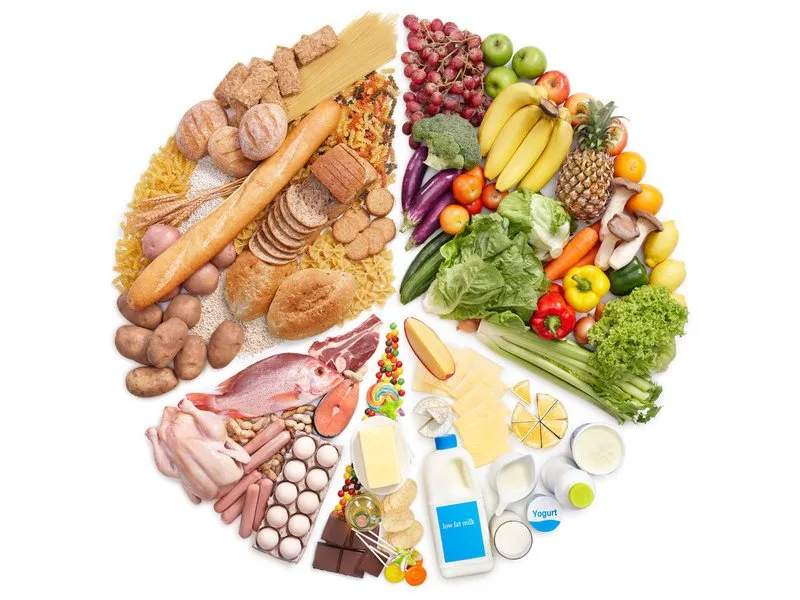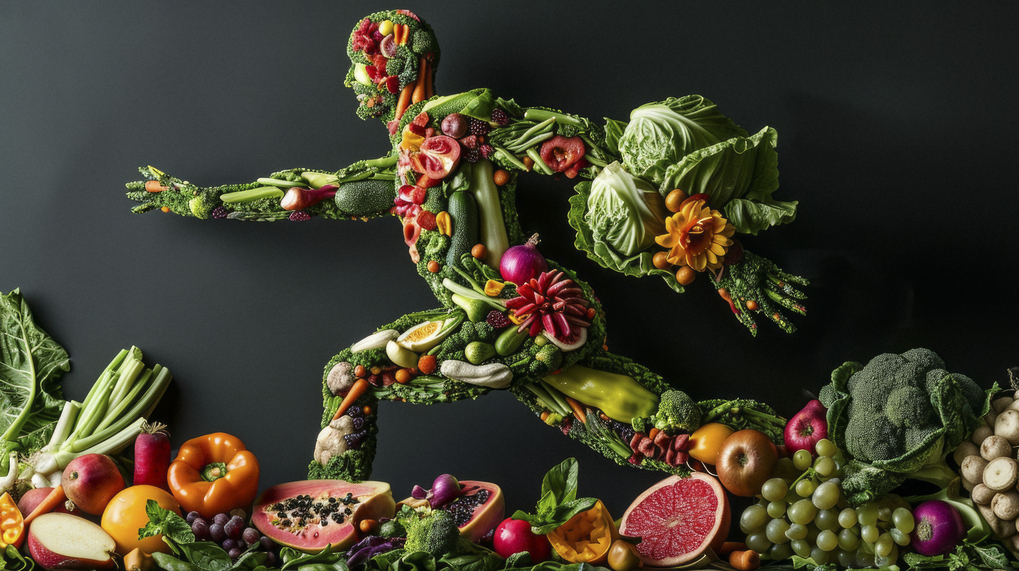Forget fad diets with their empty promises. The DASH diet, consistently ranked a top overall diet by U.S. News & World Report, offers a scientifically proven approach to lowering blood pressure.
Why Choose DASH?
Unlike restrictive fads, DASH focuses on manageable dietary changes rooted in sound nutrition. This flexibility and evidence-based approach have made it a favorite among healthcare professionals in the US, where heart disease and high blood pressure (hypertension) remain major health concerns.
- Heart Disease: The leading cause of death for both men and women in the US, heart disease is often fueled by high blood pressure.
- Hypertension: Affecting nearly half of American adults, high blood pressure is a significant risk factor for heart disease.
The DASH Advantage: Flexible and Effective
The DASH diet empowers you to take control of your health through delicious and sustainable changes. Stay tuned to learn more about the specific dietary strategies that make DASH such a powerful tool for managing blood pressure and promoting overall well-being.
DASH Diet: Who Benefits and How to Tailor It to Your Needs
The DASH diet, championed by the National Heart, Lung, and Blood Institute (NHLBI), is more than just a fad. It’s a scientifically proven plan designed to specifically target high blood pressure.
Ideal Candidates for DASH:
- High Blood Pressure (Hypertension): If your blood pressure falls above 130/80 mmHg (systolic/diastolic), DASH can be a powerful tool for management.
- Heart Disease Risk Reduction: The DASH diet can help reduce your risk of developing heart disease, a leading cause of death in the US.
- Type 2 Diabetes Prevention and Management: This dietary approach can benefit those at risk of or already managing type 2 diabetes.
DASH in Action: Delicious and Flexible
The DASH diet mirrors the USDA’s MyPlate recommendations, emphasizing whole foods:
- Fruits and vegetables
- Fat-free or low-fat dairy
- Whole grains
- Lean protein sources like fish, poultry, and beans
What to Limit:
- Processed foods: Sugary drinks, packaged snacks
- Red meat: Linked to increased heart disease risk
Sodium: The Key Difference
The DASH diet focuses on managing sodium intake, giving it an edge in blood pressure control. Two variations cater to different needs:
- Standard DASH Diet: Targets 2,300 milligrams (mg) of sodium per day.
- Lower-Sodium DASH Diet: Restricts sodium intake to 1,500 mg per day.
Building Your Plate with DASH:
Here’s a glimpse into the DASH daily eating plan:
- 6-8 servings of grains (whole grains preferred)
- 4-5 servings of vegetables
- 4-5 servings of fruits
- 2-3 servings of low-fat/fat-free dairy
- 2-3 servings of healthy fats/oils
Nutritional Breakdown of DASH:
- Total Fat: Around 27% of calories
- Saturated Fat: Limited to 6% of calories or less
- Protein: Around 18% of calories
- Carbohydrates: Around 55% of calories
- Cholesterol: Limited to 150 mg
- Fiber: 30 grams (g) or more
Calorie Customization:
The DASH diet offers various calorie levels (1200-3100 calories/day) to suit your weight loss or maintenance goals.
By understanding who benefits from DASH and its flexible variations, you can tailor this effective plan to your specific needs and embark on a tastier path to better health.
Unveiling the Power of DASH: How it Lowers Blood Pressure
The DASH diet isn’t just about what you eat; it’s about strategically incorporating foods that promote heart health and lower blood pressure. Let’s explore the science behind its effectiveness:
- Sodium Reduction: A prime culprit for high blood pressure is excessive sodium intake. The DASH diet combats this by limiting sodium intake, taking the strain off your heart muscle.
- Saturated Fat Control: Saturated fat is linked to increased cholesterol levels. By restricting saturated fat, DASH helps prevent cholesterol buildup, which can impede blood flow to the heart, raising the risk of heart attack and stroke.
- The Power of Beneficial Nutrients: DASH emphasizes foods rich in fiber, lean protein, and other key nutrients believed to contribute to lower blood pressure.
A Holistic Approach to Blood Pressure Management:
Remember, DASH is just one piece of the puzzle. Here are other essential lifestyle changes that work synergistically with the DASH diet to manage hypertension:
- Regular Exercise: Physical activity gets your heart pumping efficiently, reducing blood pressure.
- Weight Management: Shedding excess pounds can significantly improve blood pressure control.
- Alcohol Moderation: Excessive alcohol consumption can raise blood pressure. DASH encourages moderation.
- Stress Management: Chronic stress can elevate blood pressure. DASH promotes healthy habits that can help manage stress.
- Smoking Cessation: Smoking harms blood vessels and increases blood pressure. Quitting smoking is crucial for overall health.
- Adequate Sleep: Insufficient sleep can disrupt blood pressure regulation. Prioritize a good night’s rest.
By combining the DASH diet with these healthy lifestyle practices, you can create a powerful strategy for lowering blood pressure and improving your overall cardiovascular health.
A Delicious Week on the DASH Diet: Sample Meal Plan
The DASH diet calls for lots of fresh veggies and fruits, but it requires only a moderate amount of whole grains, as well as lean sources of protein and healthy fats, such as those from fish and nuts, respectively.
This distinguishes the DASH diet from other popular plans, such as the Atkins diet and the ketogenic diet, along with other high-fat, low-carb eating plans.
Now that you understand how the DASH diet tackles blood pressure, let’s explore what a typical week might look like on this heart-healthy plan.
Day 1:
- Breakfast: Whole-wheat bagel with peanut butter (no added salt), orange, milk, decaf coffee
- Lunch: Spinach salad with pear, mandarin oranges, almonds, and vinaigrette dressing; reduced-sodium crackers, milk
- Snack: Yogurt with vanilla wafers
- Dinner: Herb-baked cod, brown rice pilaf with vegetables, steamed green beans, whole-wheat roll with olive oil, berries with mint, herbal iced tea
Day 2:
- Breakfast: Mixed fruit with yogurt and walnuts, bran muffin with margarine, milk, herbal tea
- Lunch: Curried chicken wrap in a whole-wheat tortilla with apple, light mayonnaise, and curry powder; baby carrots, milk
- Snack: Trail mix with raisins, pretzels, and sunflower seeds
- Dinner: Whole-wheat spaghetti with marinara sauce, mixed greens with Caesar dressing, whole-wheat roll with olive oil, nectarine, sparkling water
Day 3:
- Breakfast: Bran flakes cereal with milk, banana, whole-wheat toast with margarine, orange juice
- Lunch: Tuna salad with romaine lettuce, Melba toast crackers, milk
- Snack: Yogurt and peach
- Dinner: Salmon and vegetable kebab with wild rice, pecans, pineapple chunks, and cran-raspberry spritzer
Day 4:
- Breakfast: Oatmeal with cinnamon, whole-wheat toast with margarine, banana, milk
- Lunch: Chicken salad on whole-wheat bread with Dijon mustard, salad with vegetables and Italian dressing, fruit cocktail
- Snack: Almonds, raisins, and yogurt
- Dinner: Roast beef with gravy, green beans, baked potato with toppings, apple, milk
Day 5:
- Breakfast: Instant oatmeal, mini whole-wheat bagel with peanut butter, banana, milk
- Lunch: Chicken breast sandwich on whole-wheat bread with cheese, lettuce, tomato, and mayo; cantaloupe, apple juice
- Snack: Almonds, dried apricots, and yogurt
- Dinner: Spaghetti with vegetarian sauce and Parmesan cheese, spinach salad with vinaigrette, corn, canned pears
Day 6:
- Breakfast: Whole-wheat bread with margarine, fruit yogurt, peach, grape juice
- Lunch: Ham and cheese sandwich on whole-wheat bread with lettuce, tomato, cheese, and mayo; carrot sticks
- Snack: Almonds, dried apricots, milk, apple juice
- Dinner: Brown rice and beans, green peas, cantaloupe, milk
Day 7:
- Breakfast: Whole-wheat bread with peanut butter, banana, yogurt, orange juice, milk
- Lunch: Turkey breast sandwich on whole-wheat bread with lettuce, tomato, mayo, and Dijon mustard; steamed broccoli, orange
- Snack: Peanuts, milk, dried apricots
- Dinner: Baked fish, scallion rice, spinach with slivered almonds, carrots, whole-wheat roll with margarine, cookie
This sample menu provides a glimpse into the variety and deliciousness possible with the DASH diet. Remember, this is just a guide, and you can adjust it based on your preferences while adhering to the core principles of the DASH plan.
Unveiling the Advantages of DASH: Beyond Blood Pressure Control
The DASH diet’s benefits extend far beyond its reputation for lowering blood pressure. Here’s a closer look at the potential advantages you might reap by adopting this heart-healthy approach:
1. Sustainable Weight Management:
Unlike fad diets, the DASH diet prioritizes whole, unprocessed foods that are naturally lower in unhealthy fats and added sugars. It also promotes moderate portion sizes. Research has shown, like in a study involving individuals with metabolic dysfunction-associated fatty liver disease (MASLD), that the DASH diet can lead to healthy weight loss.
2. A Long-Term Lifestyle Choice:
The DASH diet offers a refreshing departure from restrictive plans. Its focus on variety and flexibility makes it easier to adhere to for the long term, fostering healthy eating habits that you can maintain for life.
3. Lower Blood Pressure: A Proven Benefit:
Numerous studies have cemented the DASH diet’s effectiveness in lowering blood pressure. One such study even revealed the most significant reductions in blood pressure among participants with systolic readings above 150 mmHg.
4. Potential Disease Risk Reduction:
A stronger heart, a consequence of a healthy diet, translates to improved overall health. Studies suggest the DASH diet may benefit kidney function, blood sugar management, and even eye health. Research has shown it can lower the risk of chronic kidney disease and stroke, as noted by the National Heart, Lung, and Blood Institute (NHLBI).
5. Enhanced Heart Health:
The DASH diet’s impact on heart health goes beyond blood pressure control. A study involving women with type 2 diabetes who followed DASH revealed a lower risk of cardiovascular disease compared to those who didn’t prioritize fruits, vegetables, and whole grains. Additionally, research suggests that the DASH diet, combined with sodium reduction, can lower the risk of cardiac injury and strain.
6. Improved Type 2 Diabetes Management:
Studies have shown that combining the DASH diet with a weight loss plan and exercise regimen can lead to reduced insulin resistance, a hallmark of type 2 diabetes.
7. A Nutritional Boost:
The DASH diet emphasizes whole, fresh foods, a stark contrast to processed and prepackaged options often loaded with added salt and sugar. This dietary approach promotes a well-balanced intake of essential vitamins, minerals, and fiber.
By incorporating the DASH diet into your lifestyle, you’re not just managing blood pressure; you’re investing in your overall well-being.
DASH Diet: Short-Term Wins and Long-Term Rewards
The DASH diet isn’t just a long-term commitment to healthy eating; it offers potential benefits that can be felt relatively quickly. Here’s a glimpse into what research reveals about the DASH diet’s impact:
Short-Term Benefits (Around One Month):
- Improved Blood Pressure: Studies indicate that adhering to the DASH diet for just a month can lead to noticeable reductions in blood pressure.
- Reduced Heart Strain Markers: Research has shown that the DASH diet, even in its standard sodium version, can lower biomarkers linked to heart injury by 18% and inflammation by 13% within a month. The lower-sodium version (50 millimoles per day) yielded even more impressive results, with reductions of 23% and 20% in heart strain and injury markers, respectively.
Long-Term Advantages (Over Several Years):
- Sustainable Heart Health: Studies following participants for over a decade reveal that the DASH diet’s benefits extend far beyond the short term. Research on nearly 4,500 individuals from diverse ethnicities (aged 45-84) who followed DASH for 13 years suggests the diet can help prevent heart failure, particularly in those under 75.
These findings highlight the DASH diet’s potential to deliver a one-two punch: addressing immediate health concerns like blood pressure control while building a foundation for lasting cardiovascular health.

A Quick Recap
Looking for a delicious way to manage blood pressure and improve your overall health? Look no further than the DASH diet! Here’s a quick recap of its benefits:
- Lowers Blood Pressure: Scientifically proven to effectively reduce blood pressure, DASH is a powerful tool for heart health.
- More Than Just Blood Pressure: DASH offers a well-rounded approach to wellness, potentially reducing risks of heart disease, stroke, type 2 diabetes, and chronic kidney disease.
- Flexible and Sustainable: Unlike restrictive fads, DASH emphasizes whole foods and portion control, making it a realistic and enjoyable dietary shift you can maintain for life.
- Weight Management: The DASH diet’s focus on whole foods can naturally promote healthy weight loss. Studies have shown its effectiveness in weight management.
- Rich in Nutrients: By prioritizing fresh fruits, vegetables, and whole grains, DASH ensures you get essential vitamins, minerals, and fiber for optimal health.
- Quick Results: You don’t have to wait years to see benefits. Studies show positive reductions in blood pressure and heart strain markers within a month of adopting DASH.
- Long-Term Rewards: Sticking with DASH offers lasting benefits, with research suggesting it can help prevent heart failure, especially in younger individuals.
Remember, DASH is more than just a diet; it’s a lifestyle change that promotes heart health and overall well-being. With its delicious and flexible approach, DASH empowers you to take control of your health and enjoy a tastier journey to a healthier you.





Thank you for this well-researched and thorough article. The insights you’ve shared are incredibly valuable, and I’ll be referring back to this post often.
Glad that you liked it , Stay connected